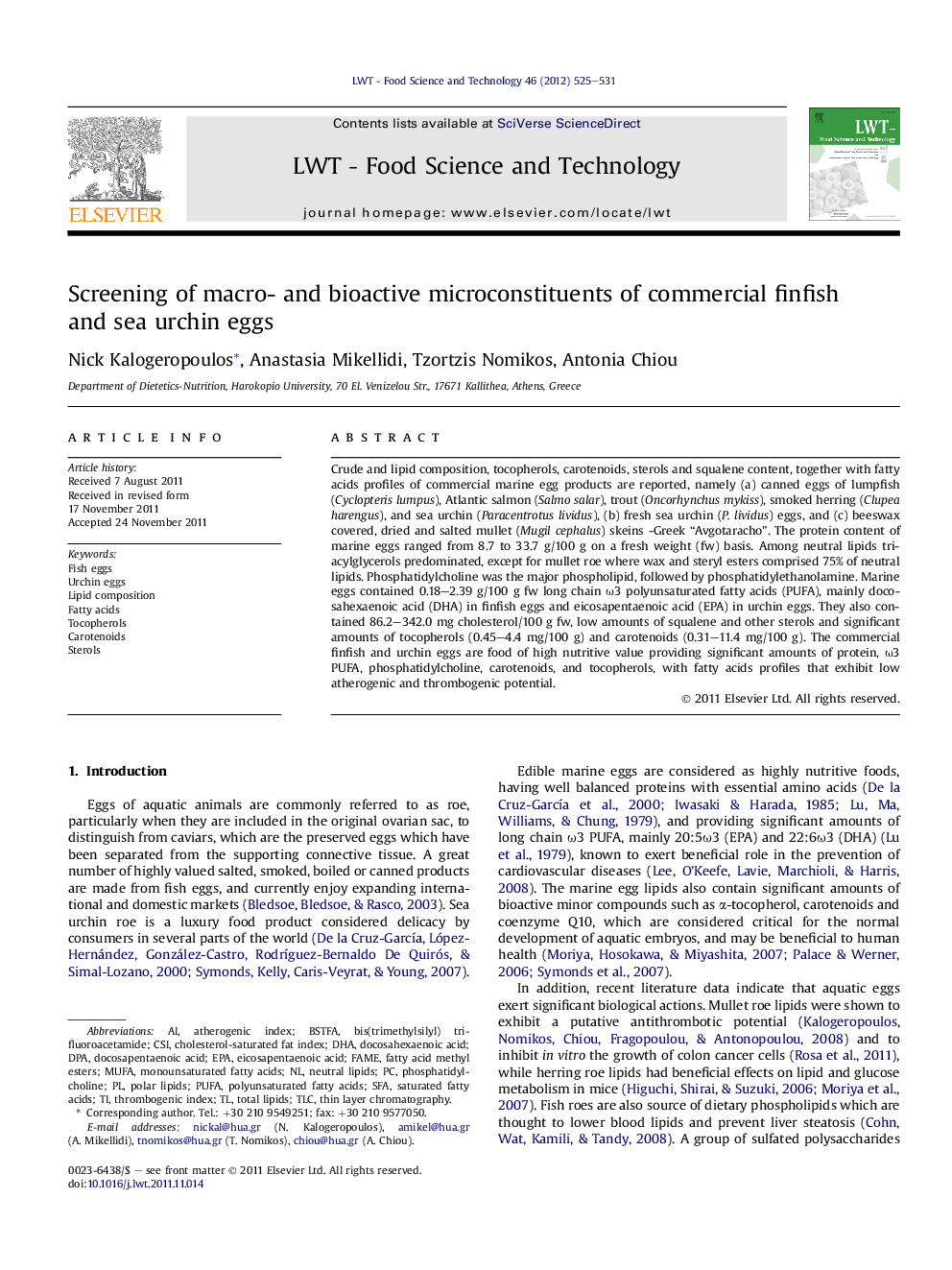| کد مقاله | کد نشریه | سال انتشار | مقاله انگلیسی | نسخه تمام متن |
|---|---|---|---|---|
| 6405727 | 1330923 | 2012 | 7 صفحه PDF | دانلود رایگان |

Crude and lipid composition, tocopherols, carotenoids, sterols and squalene content, together with fatty acids profiles of commercial marine egg products are reported, namely (a) canned eggs of lumpfish (Cyclopteris lumpus), Atlantic salmon (Salmo salar), trout (Oncorhynchus mykiss), smoked herring (Clupea harengus), and sea urchin (Paracentrotus lividus), (b) fresh sea urchin (P. lividus) eggs, and (c) beeswax covered, dried and salted mullet (Mugil cephalus) skeins -Greek “Avgotaracho”. The protein content of marine eggs ranged from 8.7 to 33.7 g/100 g on a fresh weight (fw) basis. Among neutral lipids triacylglycerols predominated, except for mullet roe where wax and steryl esters comprised 75% of neutral lipids. Phosphatidylcholine was the major phospholipid, followed by phosphatidylethanolamine. Marine eggs contained 0.18-2.39 g/100 g fw long chain Ï3 polyunsaturated fatty acids (PUFA), mainly docosahexaenoic acid (DHA) in finfish eggs and eicosapentaenoic acid (EPA) in urchin eggs. They also contained 86.2-342.0 mg cholesterol/100 g fw, low amounts of squalene and other sterols and significant amounts of tocopherols (0.45-4.4 mg/100 g) and carotenoids (0.31-11.4 mg/100 g). The commercial finfish and urchin eggs are food of high nutritive value providing significant amounts of protein, Ï3 PUFA, phosphatidylcholine, carotenoids, and tocopherols, with fatty acids profiles that exhibit low atherogenic and thrombogenic potential.
⺠The nutritional evaluation of marine egg products is of significant importance. ⺠Macro- and bioactive microconstituents of finfish and urchin eggs are reported. ⺠Marine eggs provide adequate amounts of carotenoids and tocopherols. ⺠They also provide significant amounts of protein, Ï3 PUFA, and phosphatidylcholine. ⺠Marine egg lipids had Ï6/Ï3 ratios <3, exhibiting low atherogenic potential.
Journal: LWT - Food Science and Technology - Volume 46, Issue 2, May 2012, Pages 525-531